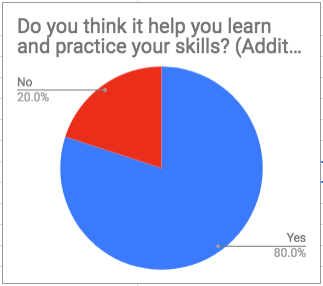Addition/Subtraction::Treasure Hunt
- V. Sanz

- Sep 25, 2018
- 2 min read
Balancing struggle, self-checking answers, thinking out of the box. Oh, and accepting feedback.

For Topic 2 closure, Addition and Subtraction, we decided give the students a series of challenges that will require them to solve problems, do computations, match models and review their expanded notation knowledge.
Students received a newsletter that announced that a teacher was planning in cancelling recess forever, turning everyone into robots, but they had a chance to stop the plans if they found the stop code. The newsletter had a clue to find the first activity hidden in the classroom, a set of five problems and phone picture. Students worked with their partners to solve the problems and found a numeric code. They thought it was a phone number but it only had 5 digits. It took them a while to figure out that the numbers could also represent letters, and finally they were able to decode the secret word. Then, they received a key to open a cabinet, where the next challenge was hidden.
They had to match questions (whole numbers and decimals additions and subtractions and also decimals to fractions) to make a puzzle that explained where was the next clue hidden. This stage took them quite long time. It was interesting to observe how some teams split the job, while others worked both on the same computation. Once they solved the puzzle, the third activity was matching decimal models to figure out where was the next piece hidden. The last activity was a Google Form with a few Expanded Notation questions.
Based on the last experience, this time I let them choose their partner, but limited to groups of two. Students were engaged, most of the teams were able to get to the third activity. Only one student got discouraged to the point of wanting to quit, however his partner kept going and they were able to continue after a break. The puzzle activity took them longer than expected, but they seemed to enjoy it. Changes for next time, saving recess generated lots of excitement, but we didn't have an appropriate closure in the last activity. Note to self: find a STOP button.
After this experience I asked the kids for their feedback. Is the first time I do it, but I want to make it a habit. About 80% of the class rated the activity either a 4 or 5 on engagement. Also, I asked if they considered it helpful, 80% answered yes.
Asking for student's feedback could be scary, but we can learn a lot and it helps them feel heard. I want to make this a habit.
My last question was rating how well they worked as a group. This information was revealing, about 50% was satisfied with a 4 or 5, while the other 50% rated their performance between 2 or 3. I want to find out more about this. We definitively need to work in best practices of collaboration,
















Comments